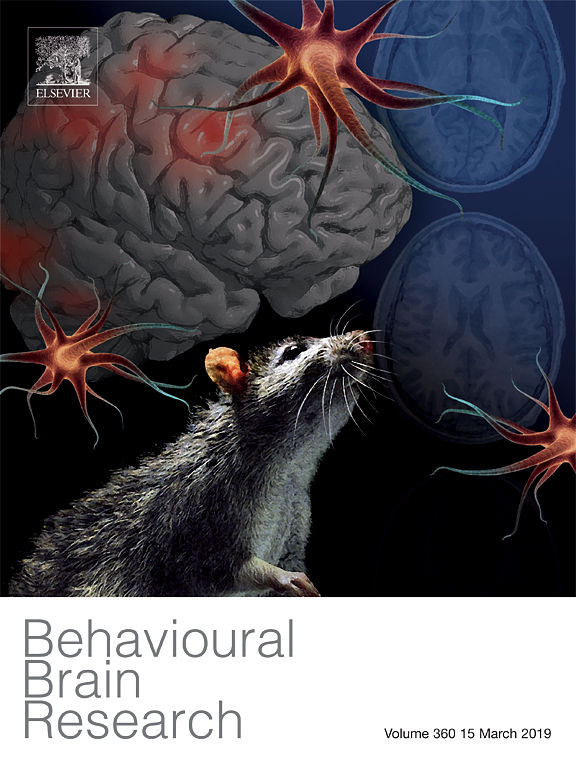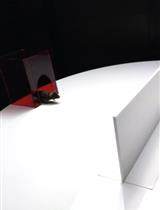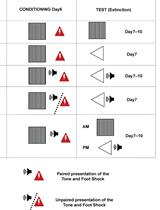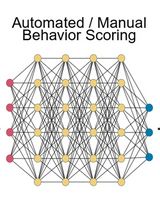- EN - English
- CN - 中文
Assessing Spatial Working Memory Using the Spontaneous Alternation Y-maze Test in Aged Male Mice
利用Y迷宫自主交替测试检测老龄雄性小鼠的空间工作记忆
发布: 2019年02月05日第9卷第3期 DOI: 10.21769/BioProtoc.3162 浏览次数: 18853
评审: Oneil G. BhalalaEdel HennessyAnonymous reviewer(s)
Abstract
The global population is aging and the prevalence of age-related diseases, such as Alzheimer's disease and vascular dementia is increasing. Understanding functional impairments and disease processes is of vital importance in order to develop effective therapeutics. Using the natural exploratory behavior of mice, the spontaneous alternation y-maze can assess short-term spatial working memory. The protocol for y-maze testing is straightforward and requires minimal resources, as well as animal training and output. Therefore, it can be broadly applied to study short-term memory in aged rodent models.
Keywords: Y-maze (Y迷宫)Background
The global population is aging, and in many countries the people over the age of 65 have surpassed the number of children (United Nations Department of Economic and Social Affairs, 2013). Since people are living longer, there is an increase in the prevalence of diseases associated with aging (Jaul and Barron, 2017), such as neurodegeneration (Brown et al., 2005). To understand the degree of impairment and to investigate therapeutic options scientists need tools, such as behavioral tests. Assessing behavioral outcomes facilitates this knowledge acquisition, which then gives rationale to study mechanisms and potential therapeutics.
In this protocol, we described how the spontaneous alternation y-maze can be used to assess short-term spatial working memory by using male aged methylenetetrahydrofolate reductase (MTHFR) heterozygote and wild-type mice as our model system. MTHFR is an enzyme involved in one-carbon metabolism, and deficiencies in MTHFR levels have been implicated in vascular diseases (Frosst et al., 1995; Devlin et al., 2004), such as stroke (Song et al., 2016) and dementia (Dam et al., 2017). The protocol for spontaneous alternation y-maze testing is straightforward and requires minimal resources, including animal training and output, therefore can be broadly applied to study short-term memory in aged rodent models. Additionally, the standard y-maze can be adapted to measure spatial and object recognition, as well as novelty exploration using the 2-trial y-maze.
Materials and Reagents
- Aged C57Bl/6 male mice (24-months-old) which model 56-69 year-old humans (Flurkey et al., 2007)
Notes:- Differences in the behavioral C57Bl/6 mice have been observed compared to other stains (Crabbe et al., 1999). Furthermore, sex differences in behavioral tests have also been widely described in the literature (Kopp et al., 2006).
- For testing on the spontaneous alternation y-maze, animals can be maintained on a diet of standard mouse chow and water ad-libitum. The mice were maintained on a regular light cycle.
- Surface disinfectant, a surface disinfectant to remove odors on the y-maze between animals (e.g., 70% ethanol)
Note: The literature should be consulted when selecting a disinfectant to determine which solution is ideal for mouse strain being tested (Campagna et al., 2016) and equipment being used.
Equipment
- Y-maze (Custom made or commercially purchased) (Stoelting, catalog number: 60180), the y-maze can be made of gray, white, or black plexiglass with the dimensions 39.5 x 8.5 x 13 cm for mice (Figure 1A)
Note: The plastic fiber makes it easy to disinfect between animals to remove any odors. The three arms of the maze are interconnected at an angle of 120°. Animals should be habituated to the room for at least 30 min prior to testing, without the y-maze being visible. - Video camera
Notes:- Animal behavior can be tracked using a video camera recording, real-time analysis, or automated tracking equipment such as AnyMaze (Stoelting, catalog number: 60000). For video camera recordings, no special frame rate is required.
- We video recorded all animals which facilitated scoring by two individuals blinded to experimental groups. The set-up should be above the y-maze and not interfere with the testing as shown in Figure 1B.
- Visual cues
Note: Paper visual cues can be custom made and hung on the walls of testing room. These cues should be uniform in color and examples are shown in Figure 1B.
Figure 1. Pictorial representations of spontaneous alternation y-maze apparatus (A) and testing set-up (B)
Software
- Animal tracking program, AnyMaze (Stoelting, catalog number: 60000)
- Statistical testing, GraphPad Prism (GraphPad Software)
Procedure
文章信息
版权信息
© 2019 The Authors; exclusive licensee Bio-protocol LLC.
如何引用
Prieur, E. A. and Jadavji, N. M. (2019). Assessing Spatial Working Memory Using the Spontaneous Alternation Y-maze Test in Aged Male Mice. Bio-protocol 9(3): e3162. DOI: 10.21769/BioProtoc.3162.
分类
神经科学 > 行为神经科学 > 学习和记忆
您对这篇实验方法有问题吗?
在此处发布您的问题,我们将邀请本文作者来回答。同时,我们会将您的问题发布到Bio-protocol Exchange,以便寻求社区成员的帮助。
提问指南
+ 问题描述
写下详细的问题描述,包括所有有助于他人回答您问题的信息(例如实验过程、条件和相关图像等)。
Share
Bluesky
X
Copy link













